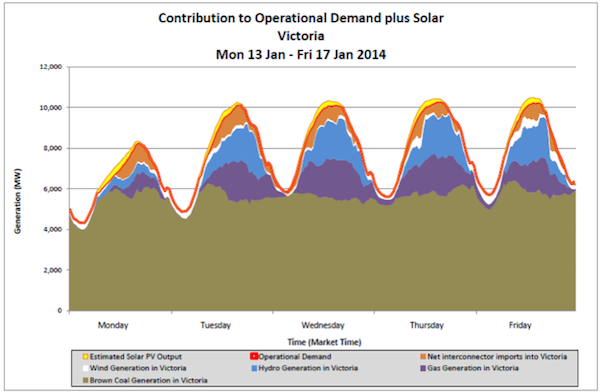The ability of rooftop solar to shift the peak of consumption has been highlighted by new analysis from the Australian Energy Market Operator (AEMO) into events during the recent heat-waves that hit the southern states of the country.
The analysis is focused on two states – South Australia and Victoria. South Australia has the highest level of rooftop solar penetration in the country – one in 5 – as well as excellent solar resources. It also has the highest penetration of air conditioning.
Data has shown that rooftop solar has contributed more than 15 per cent of demand at various points in recent weeks, and more than 10 per cent for the hours of 10am to 4pm. That has contributed a significant reduction in daytime consumption from the grid.
The AEMO data has also confirmed that solar PV has helped shift the operational peak later in the day. It compared how the grid performed during the heatwave in 2014 and a similar one in 2009.
Graph via AEMO
The blue line shows demand in 2009, when there was little rooftop solar PV, while the yellow line reflects 2014 demand, including solar, and red is demand from the grid not including solar.
“The contribution of solar is a noticeable percentage of the total demand in South Australia,” AEMO says.
“The data indicates the solar could be contributing to shifting the time of the peak demand in South Australia during the high demand days.” It notes, two of the peaks occurred at 6.30pm, when they had occurred much earlier in previous years.
It could be that with the addition of battery storage, or even more west-facing solar panels, then the operational peak could be deferred further, or even removed entirely. That could deliver major savings for grid operators, and grid costs, although it may not please incumbent generators who rely on the revenue from daytime demand.
© 2014 Solar Choice Pty Ltd
